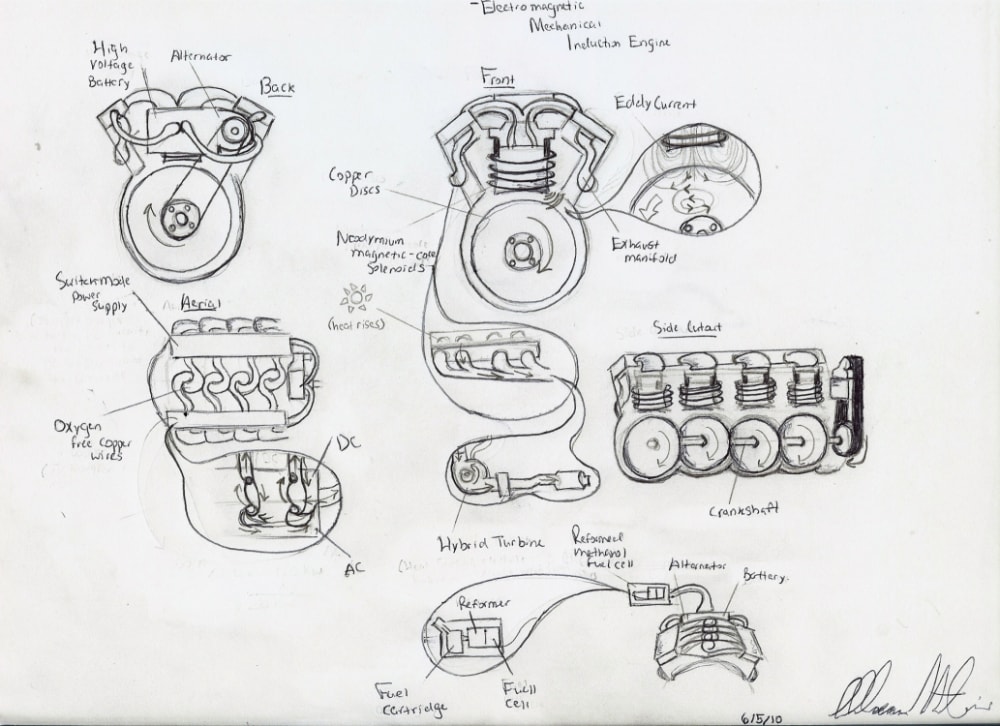The Rotational Induction Engine is an electromagnetic induction engine that provides a proper alternative solution to internal combustion engines. Derived from linear induction and linear synchronous motors, the linear motion of electromagnetic propulsion seen on many standing- launch roller coasters can also be used to propel vehicles. Changing linear induction to rotational induction accommodates a more powerful, and very efficient engine to be manufactured for any automobile.
The rotational motion from induced magnetic fields are provided by eddy currents conducted within 4 copper discs. Each disc is connected to a crankshaft, which is then connected to a flywheel to apply the rotational force to a transmission, thus providing motion for a vehicle. Two switch mode power supplies having a total output of 500 kw (approx. 670 hp), supply alternate and direct currents to cycle power between the supplies, and charge 4 neodymium magnetic-core solenoids to induce the magnetic fields.
During ignition by the push of a button, a small reformed methanol fuel cell will send a charge to both supplies to begin the engine cycle, providing initial rotation of the crankshaft once magnetic fields are induced. While the rotational inductance begins, the fuel cell will turn off due to a fixed pulley on the crankshaft. A belt connected to the pulley will turn an alternator to recharge a high voltage battery. The battery then provides the current distribution within both supplies to continue rotation of the shaft by electronic gear measuring.
Using fuel cell technology with this engine dramatically reduces global consumption of petroleum. Reducing its flammability and reforming the lighter hydrocarbons such as methane, provides a safer and less strenuous form of fueling for vehicles. The engine also does not consume nor combust fuel for motion, making periods of refueling expanded to months at a time. With having much less emissions than ICE's, the high performance and very high mileage under operation can replace many combustion engines, which require frequent refueling and burning of harmful chemicals.
With less parts, such as having no pistons, cam gears, valve springs, spark plugs, intake, throttle body, manifolds, and etc. makes manufacturing much less expensive.
Considering the construction of this engine being in either front, rear, or all wheel drive capabilities, the overall weight and size of the engine is substantially less than a combustion engine. This makes an average vehicle (i.e. Honda Civic) much lighter, and faster than any traditional combustion engine.
Like this entry?
-
About the Entrant
- Name:Hakeem Maturine
- Type of entry:individual
- Hardware used for this entry:SketchbookSoftware used for this entry:None
- Patent status:pending

